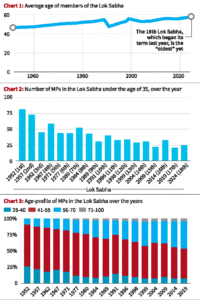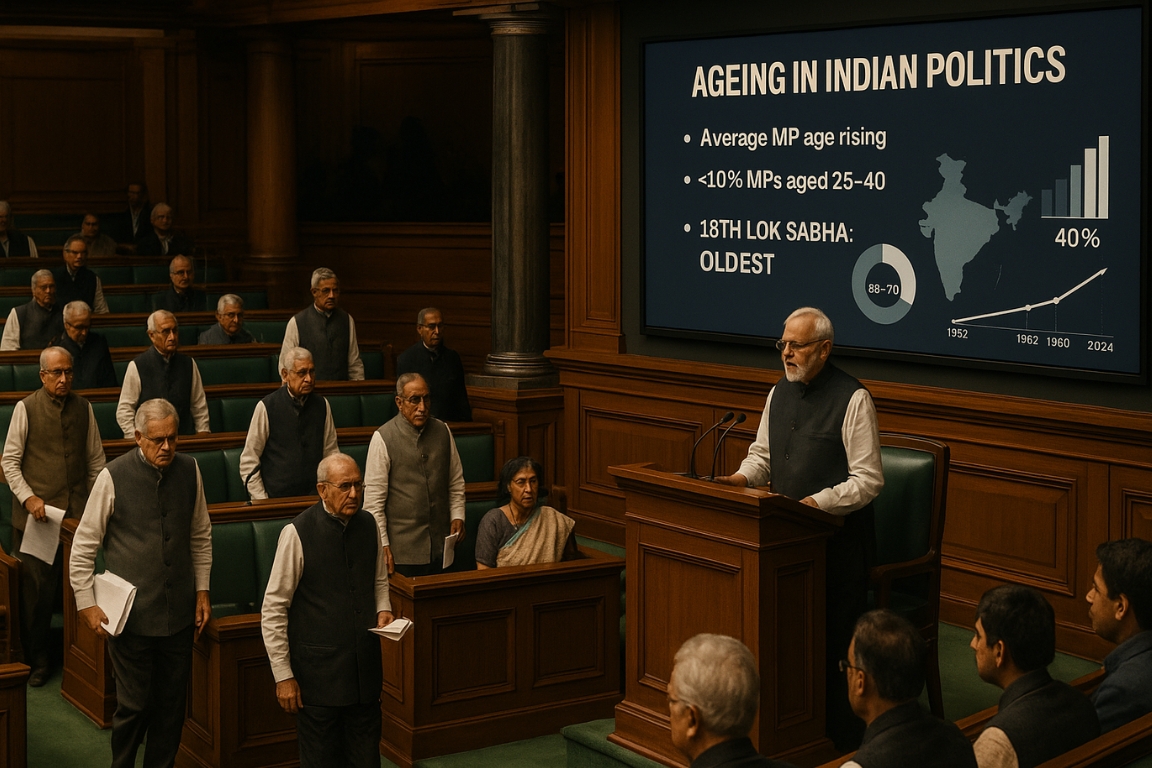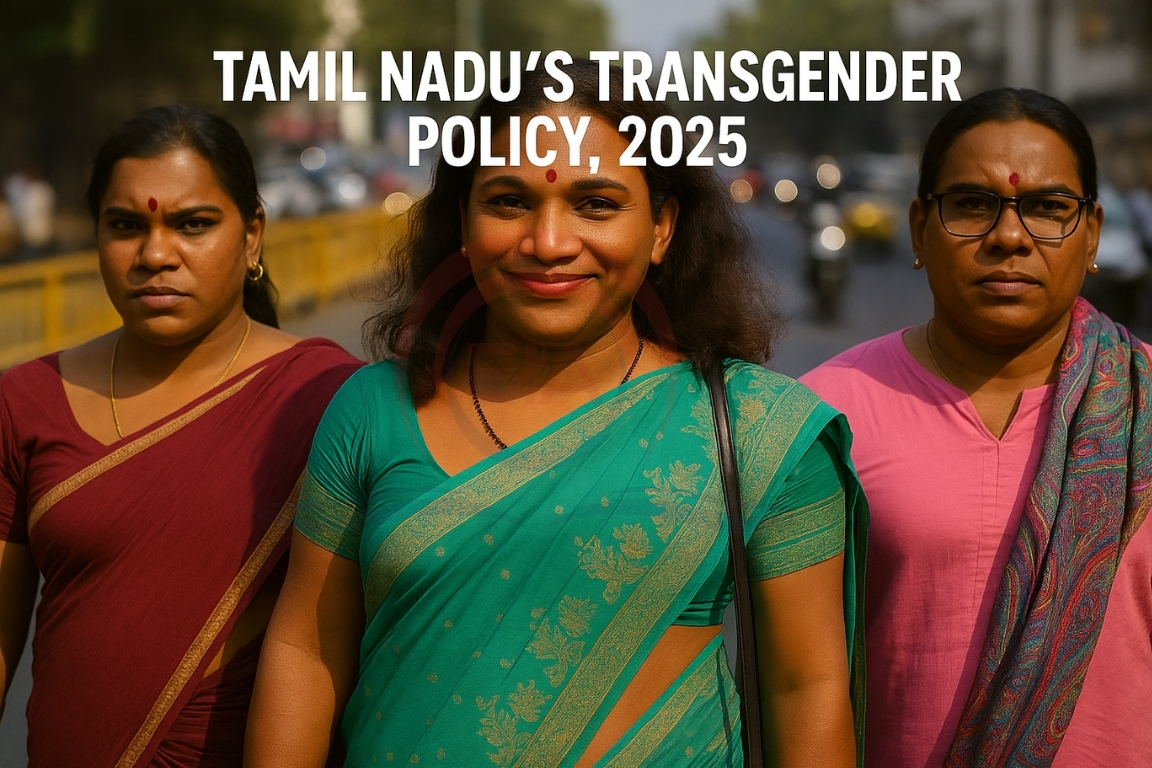The 18th Lok Sabha has been recorded as the “oldest” in India’s history, with the average age of MPs steadily increasing over the decades.
Background
- At independence, Jawaharlal Nehru became PM at 58 years; Rajiv Gandhi later became the youngest PM at 40 years.
- Narendra Modi took office in 2014 at 63 years, while Morarji Desai became PM at 81 years.
- Median age of PMs has increased from 66 years (Nehru’s time) to about 76 years now.
- Chief Ministers’ average age rose only slightly, from 57 in the 1950s to about 60 in the 2020s.

Lok Sabha Age Profile
- Average age of MPs: Rose from 46.5 years in 1952 to 56 years in 2014.
- 18th Lok Sabha: The “oldest” so far.
- Decline in youth representation: MPs aged 25–40 fell from 25-30% in the 1950s to under 10% today.
- Rise in older MPs: Members aged 56–70 years increased from <25% in 1952 to nearly 40% by 2019.
- MPs under 35 years: Sharp fall over time (Chart 2 shows decline from 1952 peak to around 20-25 MPs in recent years).
- Age imbalance: While half of India’s population is below 30 years, only 0.007% probability exists that a Lok Sabha MP is in this age group.
Issues Highlighted
- Gerontocracy: Rule by elderly leaders reduces political dynamism.
- Policy disconnect: Older leaders may not fully represent youth aspirations (education, jobs, technology).
- Leadership vacuum: Lack of grooming younger politicians for leadership roles.
- Health and efficiency: Concerns over leaders’ capacity to handle demanding governance roles.
- Lack of norms: No fixed retirement age for politicians, unlike in judiciary or bureaucracy.
Implications
- Democratic gap: Parliament does not reflect India’s youthful demographics.
- Slower reforms: Hesitation to adopt innovative, tech-driven policies.
- Reduced political participation: Discourages youth from contesting elections.
- Perception of politics as stagnant: Reinforces idea of politics dominated by elders and dynasties.
Way Forward
- Encourage youth participation: Reserve party tickets for young candidates.
- Leadership renewal norms: Consider voluntary retirement age limits (e.g., 75 years).
- Capacity-building: Train young leaders through fellowships and political internships.
- Strengthen youth wings: Make them genuine platforms for grooming future leaders.
- Diverse representation: Ensure balanced participation of both experienced leaders and younger voices.
Conclusion
The government’s move to bypass consultations through OMs weakens safeguards, sidelines community consent, and raises serious health, livelihood, and ecological risks. Such exemptions also set a worrying precedent for mining governance across India.





